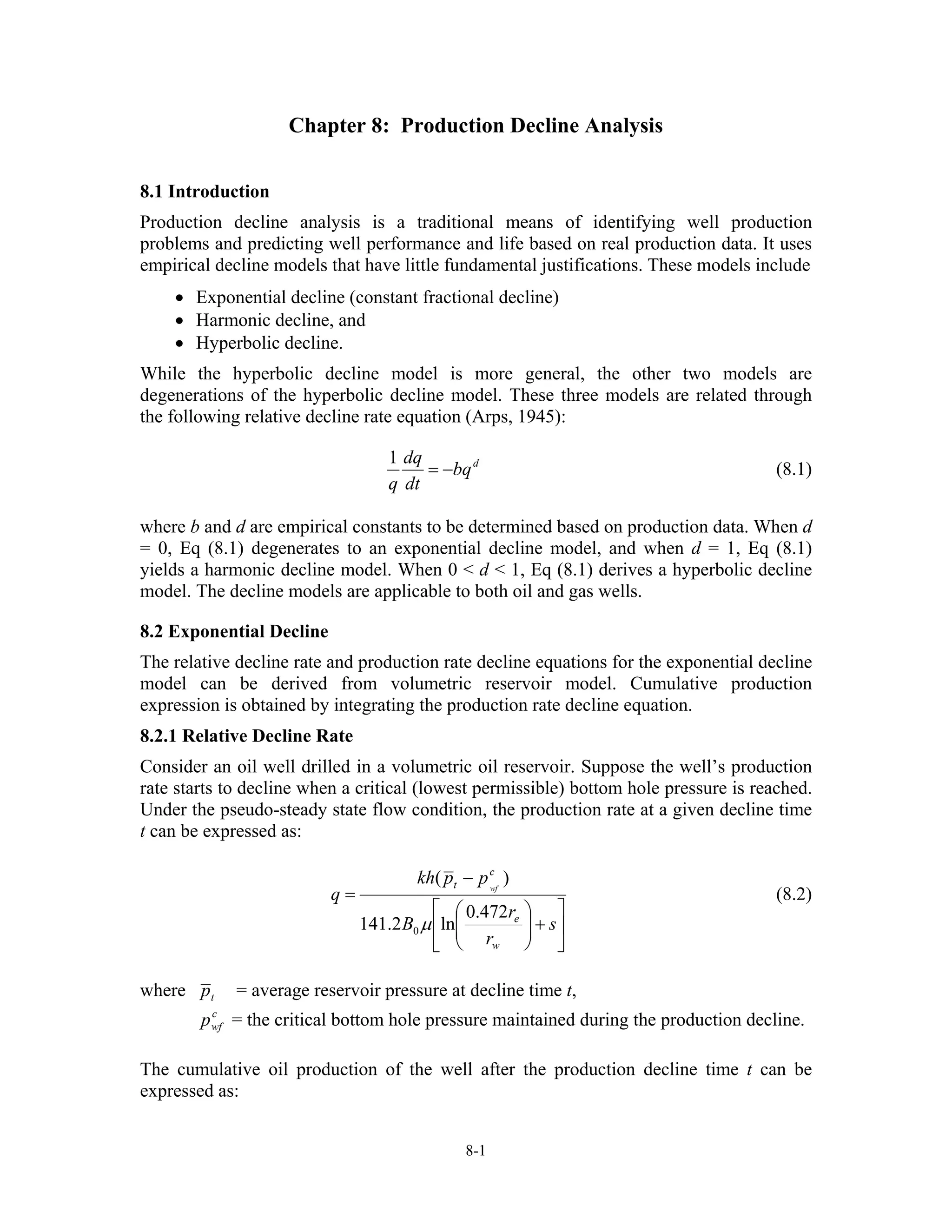Chapter 8 discusses production decline analysis, focusing on traditional methods to identify well performance issues using empirical decline models like exponential, harmonic, and hyperbolic decline. Each model is linked through relative decline rate equations, with detailed derivations for cumulative production, determination of decline rates, and effective decline rates over time. Additionally, it covers practical examples and graphical methods for identifying the appropriate decline model based on production data.







![Year
Rate at End of Year
(stb/day)
Yearly Production
(stb)
0
1
2
3
4
5
100.00
61.27
37.54
23.00
14.09
8.64
-
28,858
17,681
10,834
6,639
4,061
68,073
8.3 Harmonic Decline
When d = 1, Eq (8.1) yields differential equation for a harmonic decline model:
bq
dt
dq
q
−=
1
(8.31)
which can be integrated as
bt
q
q
+
=
1
0
(8.32)
where q0 is the production rate at t = 0.
Expression for the cumulative production is obtained by integration:
∫=
t
p qdtN
0
which gives:
( bt
b
q
N p += 1ln0
). (8.33)
Combining Eqs (8.32) and (8.33) gives
( ) ( )[ qq
b
q
N p lnln 0
0
−= ]. (8.34)
8-8](https://image.slidesharecdn.com/declinecurve-180223210546/75/Decline-curve-8-2048.jpg)















